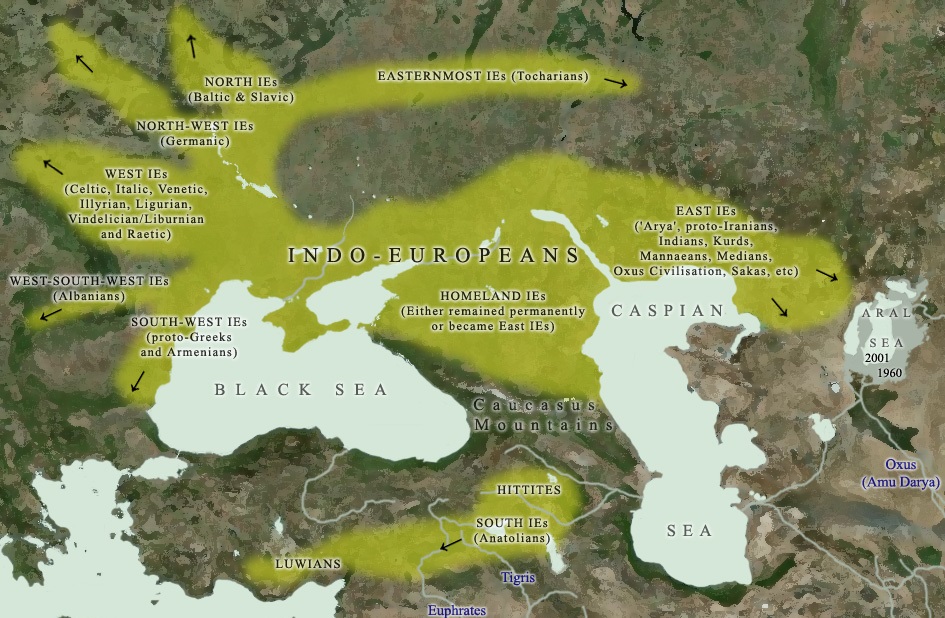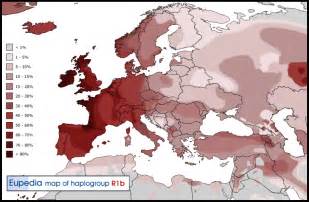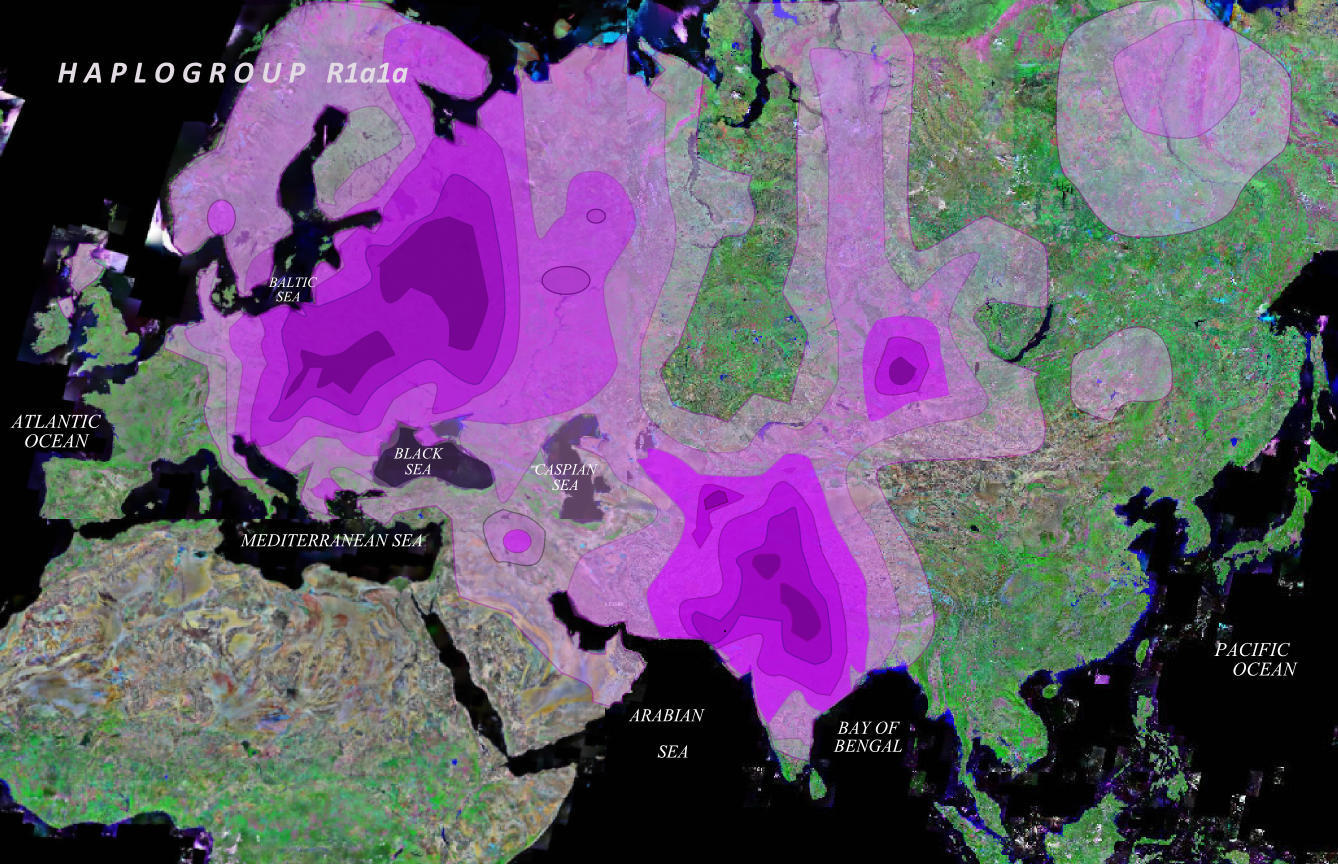
The study of the human genome continues to be a fertile ground for new information about ourselves. A particularly interesting and rapidly growing field is that of Y-DNA and mtDNA. One of the first things that makes these particular pieces of DNA so interesting is that they do not recombine each generation. The way most DNA works is through a case of recombination, generation after generation – 50% from your father and 50% from your mother. Y-DNA is carried only in the Y chromosome (the male sex chromosome), and is therefore passed unshuffled with a man’s mother’s DNA directly from your father, creating a link through time with your paternal line. Women, on the other hand, do not have an exclusive sex chromosome to create such a link. This is where mitochondria come in. Mitochondria are organelles within cells that convert the food you eat into energy that your cells can use. In human reproduction, after the sperm fertilizes the egg, the male mitochondria is destroyed, meaning that every human carries the mitochondrial DNA of their mother. Men simply do not pass on the mtDNA of their mother, while women do, creating the same sort of multigenerational link with our maternal line.
As more data was gathered on living populations and their frequencies of Y-DNA and mtDNA, a human family tree has begun to emerge.1 One of the interesting tidbits that has emerged is that all humans can trace their Y-DNA lineage back to one man and one woman. This was a major blow to the idea that the separate races emerged from their own proto-human or primate-like ancestors, as we could reasonably expect that at least some of their Y-DNA or mtDNA would still be around. One other point of interest as well, especially to the Christian, is the fact that the Y-DNA Adam is much younger than the mtDNA Eve, based on mutations. Basically, men have a more recent common paternal ancestor, while women have to reach further back in time to reach a common genetic ancestor with all the women of the world. What makes this so interesting is that, according to the biblical account, men in fact do have a more recent common ancestor via Noah and his sons, whereas women could theoretically go all the way back to Eve to have a common ancestor based on the wives that Noah’s sons chose.
Archeogenetics, paired with the more seasoned disciplines of archeology and linguistics, continues to illuminate the story of man’s ancestors. It bolsters some theories while putting to rest many others. Archeogenetics applies the study of Y-DNA, mtDNA, and autosomal DNA to human remains. Scientists’ abilities to extract DNA from more ancient sources continue to improve, allowing samples to be taken from pre-literate periods. When the study of Y-DNA and mtDNA first came into its own and the living populations of Europe were tested, differences in Y-DNA frequencies by region were apparent. The pattern that immediately jumped out was that the West was dominated by a Y-DNA lineage named R1b. As a broad haplogroup, R1b reaches its highest concentrations in the far West of Europe in the British Isles, Spain and western France. R1b peaks in parts of Ireland and Basque country. A cousin of R1b is R1a, and both are descended from the haplogroup R1. R1a finds its highest European frequencies in Poland at over 50%, is most common in the Slavic lands of the East and the Baltics, and in lesser degrees is in Central Europe and Scandinavia. The third largest, and also very important lineage for Europe, is Y-DNA haplogroup I, split into two different subclades as well, I1 and I2. These will not be covered in this essay.


mtDNA did not provide as many immediate patterns or insights, which was illuminating in itself on two counts. Women don’t have the same kind of vast fertility differences among each other that men can have among themselves. Mother Russia and the Duggars aside, women tend to have a much more similar rate of reproduction to one another. By contrast male lines, even in a monogamous culture, can have vastly different rates of offspring based on resources, or even group status, and this is exacerbated in polygamous societies. The other point of interest is that women historically have been a much more stable part of the population tied to the land. Mass migrations where women come with their menfolk, such as the colonization of North America, are the exception rather than the rule. The Spanish and Portuguese conquest of South America is an enormous example, where the vast majority of mtDNA lineages are of Indian origin, while R1b is the dominant Y-DNA lineage stemming from the conquistadors and other Iberian settlers. An even more modern example can be seen with the pending conquest of Europe itself, where many sub-Saharan Africans and various Semitic nationalities are pouring in. They’re almost exclusively male, and based on their behavior, they (even if subconsciously) plan on taking their women from Europe itself. Various quotes, however, from Imams or even just people on the street, show this to be very conscious indeed.
The idea of a mass migration, which usually entails some sort of conquest, was completely out of the question for many post-WWII scientists. R1b was considered to have been the indigenous Y-DNA haplogroup of Western Europeans since the Neolithic Age. The Indo-European language family is an observable fact, stretching from Ireland to India. But whether it was spread through peaceful trade and cultural contact or folk migrations and conquest was still up for debate – until recently.
It was increasingly hard to ignore that R1a is both in Slavic lands and in Persia and northern India, where the dreaded Indo-Aryans were said to have swooped down with their chariots as conquerors. Ancient Persians describe themselves as Aryans, and even the name Iran comes from the same root. The branch of this family that pressed into the Indian subcontinent even wrote about it later in the Vedas. These writings describe a culture and mythology strikingly similar to the ancient European cultures.

As ancient remains were tested in the Western European Neolithic Age, there was a dearth of the Y-DNA haplogroup R1b. Autosomal DNA showed that these ancient farming Europeans were most similar genetically to people of Southern Europe, especially Sardinia, which has experienced few invasions. These farmers were of what old-school anthropologists had called the Mediterranean race, based on its current distribution. Cultural artifacts and burial practices that spread west during the European Bronze Age were said to be instances of cultural diffusion. That these new cultures were accompanied by a new physical type – taller, more robust skeletons with Nordic and Alpine-like skulls – was simply ignored…perhaps rapid evolution.
Two of these cultures and accompanying physical types have been termed the Battle Axe culture and the Bell-Beaker culture. The first of these cultures to appear on the scene was the Battle Axe culture, also known as the less-violent-sounding Corded Ware culture. The term is based on their practice of burying their menfolk with large battle axes, but they also had pottery decorated with the imprints of cords. I can only imagine the name they would prefer to be remembered by among their posterity. These people buried themselves in large mounds called Kurgans or Tumuli as individuals, rather than the communal burial grounds that were more common amongst the farming and hunter-gathering populations of Europe. Remains of their culture show them spreading most likely from the Pontic steppe, found in modern Russia/Ukraine. The Battle Axe culture was pastoral in nature and expanded through Eastern Europe into Central Europe and Scandinavia, even penetrating into Belgium at its height. Wolfgang Haak conducted a genetic study of many remains of this expansive culture that showed R1a overwhelmingly, along with other minority haplogroups. Also, this was an exception to the rule we spoke of earlier in that it was a full folk migration, with many women coming along too. This contributed to the fact that at least in the earlier stages of migration there was little intermixture, and the Battle Axe culture averaged 75% of its autosomal DNA from the Pontic steppe.
A veritable flood of DNA knowledge is pouring out now, and the evidence has mounted to the point of being about as conclusive as science can get about anything. The Indo-Europeans were a real people, and they really spread their DNA. R1a was and is the lineage of several branches of the Indo-European family, including the Balto-Slavic and Indo-Aryan super groups. Wolfgang Haak even titled his paper, referenced earlier, “Massive migration from the steppe was a source for Indo-European languages in Europe.” These were most likely clans of the Indo-Europeans furthest to the north and east. Those Indo-European clans of the north went west into Europe or even stayed on the steppe, while those who went east founded the Andronovo culture, the progenitor of the Indo-Aryans of Persian and India. The Germanics are their own special case that I will attempt to cover later. The Battle Axe culture contributed to the DNA of the Germanic peoples, and no doubt to some of their culture and language too, but how much is still up for debate.
That is all fine and well, and even exciting. If you’re reading this, however, like me you most likely hail paternally from the lands of the “West” – the British Isles, Low Countries, France, western Germany, and so on. It can no longer be ignored that the latter culture I mentioned above, the Bell-Beaker culture (another unfortunate archeological name based on pottery), stemmed from the Indo-Europeans. The Bell-Beakers were Indo-Europeanized not primarily through cultural transmission, but like most historically visible transfers of culture, through the spreading of an actual people. A new paper with over 100 samples of different ancients who were members of the Bell-Beaker culture has come out in May.
This behemoth of information has demonstrated conclusively what many have been beginning to suspect and claim – that R1b came with the Bell-Beakers. Months ago it was shown that the ancestors of the modern Gaelic peoples of Ireland were relative newcomers with the discovery of the “Rathlin Men,” who had Steppe DNA and Farmer DNA, but Farmer DNA traceable from Central Europe rather than the Isles.2 These men lived c. 2000 B.C., preceding what archeologists feel comfortable calling Celtic, but they were most certainly proto-Celtic. They also carry a version of R1b carried by the vast majority of British Isles men, especially of the Celtic fringe to this day. The paper goes to show that there was a massive population replacement of the British Isles stemming from the Bell-Beakers, up to 90%! All of this perhaps adds a little more stock to the Irish Book of Invasions, a stylized rendition of ancient Gaelic oral tradition on Irish origins. The Bell-Beakers, or western branch of the Indo-Europeans, had many similar practices as the Battle Axe culture: burying their dead in tumuli as individuals, bronze technology, horse-riding, mead-drinking, heroic tradition, and a patriarchal culture.
The new paper has gone to show that the vast majority of Bell-Beaker Y-DNA was R1b. The men of R1b have continued in this ancestral tradition of exploration by settling the continents of America and Australia in this modern era. An interesting parallel is found in Genesis 9:27 about the descendants of Japheth. Traditionally, these descendants have been considered to be the Indo-Europeans: God shall enlarge Japheth, and he shall dwell in the tents of Shem; and Canaan shall be his servant.
In conclusion, learning about our own ancient history can teach us many lessons for today. Firstly, we can see clearly from the patterns of migration and conquest that a people’s place in the world is far from guaranteed, regardless of what a UN convention or constitution may say about so-called “inherent rights.” Secondly, and perhaps more importantly, a people that loses its vitality and ability to defend its culture and patrimony will be taken over and replaced by those surer of themselves and their beliefs. For example, in southern Europe, the populations in Italy and Greece, although descended mostly from the early European Farmers (who were non-Indo-European), were dominated by the Indo-European minority who dictated their culture and religion, giving us the pantheons of Rome and Greece. So it could be said of the modern West: if we retain the majority of our European DNA but are culturally and spiritually made to be Afro-Semitic, have we really saved and defended what is most important?
Western Clans: R1b Patriarchs
Footnotes
- ISOGG is a great resource to learn more about the topic. ↩
- This also applies to the rest of the British Isles. The modern English are the least like the Rathlin men, but 20-40% of the English genome stems from the Anglo-Saxon invasions. The rest of their autosomal DNA is more Celtic-based like their Welsh, Scottish, and Irish neighbors. ↩
| Tweet |
|
|
|




